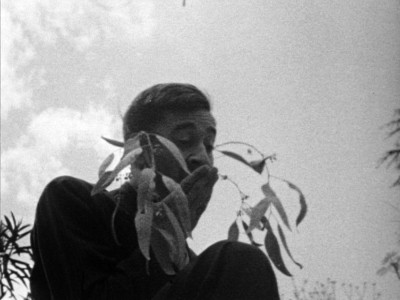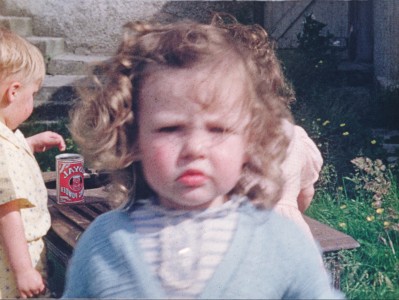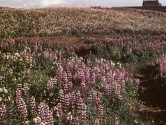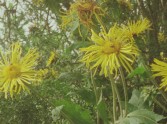
Being in a Place... & Films by Margaret Tait
Screening on Film
$15 Special Event Tickets
Well, what was it, ‘Speak the things you know,’ you know? Make films about what you really feel, what you really know..
How to bring the qualities of the big film into independently made shorts—taking available actuality as material then by known cinematic methods to create something with its own entity and duration, its own substance—is the inspiration and discipline in this work.
Around 2019 I began work on a film about Margaret Tait, the initial impetus being the discovery of a box of Tait’s 16mm rushes and offcuts* that were rejected by the Moving Image Archive, where the majority of her filmic elements reside. The material—all collated and spliced together by Tait on reels (including sound takes)—was rejected on the criteria of not being considered “finished films” and therefore presumably of insignificant artistic value to the archive. I found this judgement strange and inconsistent as the archive already holds unfinished films of Tait’s and presents them on their website making no distinction between what is completed or otherwise. In recent years there has been an academic interest in the “unfinished film” reconsidering the rich generative potential of this phenomena rather than deeming it a site of failure.
Being in a Place is based on Tait’s unrealised script proposed for Channel 4 in 1983 titled Heartlandscape Orkney: Visions of Ephemerality and Permanence. It was written at a time of great excitement about the new channel and the possibilities it could afford independent filmmakers. Part of Channel 4’s original mandate was to provide an alternative to the existing channels by providing an inclusive and diverse platform for disenfranchised groups. Margaret, an older, female filmmaker based in the archipelago of the Orkney islands, therefore would seem like a natural choice to have been involved in such an initiative. Unfortunately, this was not to be.**
In the first half of my film the archival material dwells on lists—shots, sounds, memos, titles and reflections on screenings undertaken (including Tait’s thoughts on the current avant-garde “structuralist” filmmakers—several of whom adopted her as an influence and considered her the most apt “predecessor” to their own experimental project). As the film draws on, we are introduced to a series of correspondences between Tait and several television producers or funders, to whom she appeals for opportunities and engagements. In all of their replies Tait’s proposals are rebuffed.***
The proposal for Heartlandscape was based around a journey from her home, East Aith, to her studio, in an old “kirk” in Rendall. Tait’s proposal was rewritten several times, considering different titles and chapters. At one point, it is called Heartlandscape Of Orkney; in another it’s referred to as Being In A Place – visions of permanence and ephemerality. The typewritten budget outlines a 75-minute, 16mm film shot on Eastman Kodak colour film, working with a film crew for four weeks and also shooting parts herself (which she writes would be more effective than working with a film crew). She considers £2000 for her fee (less than the price of an answer print) and then reconsiders that figure, adding, by hand, an extra 1 to make a more reasonable £12,000. One version of the chapters includes: Brief Portraits; Outlook (through windows, clear and coloured); Garden Pieces; Heartlandscape (at the heart of the island and the last of the wilderness); All To Rust; The Town in the Isles and Human Portraits. Other versions of the proposal incorporate a preexisting black and white film: Start of a Race, End of a Show, etc. (1976) and what would be her final film, Garden Pieces (1998). In her proposal she makes several allusions to how she prefers to work: “in the way I work the shape and pace of the film come out of the filming itself.” Tait often made reference to her use of “available actuality”; these methodologies would no doubt be an anathema to a more traditional, television production.
One of the aspects of Tait’s original proposal I found most nourishing was to consider her metaphors for structuring and editing the work; in these she draws from her deep knowledge and love for Pibroch (a type of Scottish bagpipe music consisting of a series of variations on a theme). In these notes, she makes references to certain shots forming the “ground” whilst others embroider on these, as if composed “entirely from grace notes.” In the same way that she drew on poetry as a structuring device for filmmaking—we can see how in her Heartlandscape film—she draws on musical forms (the crunluath a mach) considering a radical interweaving of shots and chapters which would invoke “repetition, elaboration and glimpses of almost subliminal yet related images.”
My own film ends with a rather scathing comment from Tait on the current situation of Scottish film culture: that there is no such thing, i.e. that most “Scottish films” are not made from within Scotland but merely use Scotland as a landscape. Tait’s engagement with people, place and film form embodies a true alternative to this. Her films were vividly subjective—“full of poetry.” She was quietly experimental yet remained committed to the community and place where she grew up and returned, the Parish of Kirkwall, on the mainland of Orkney. – Luke Fowler
Lezione di Recitazione
Beware of approximations,
Tamberlani said to the student actors,
and I was listening.
Again and again he made that point.
Go to the heart of what it is,
Examine each character, each situation for itself
Each time
And never take the time before’s presentation,
Another person’s reading
Or anything else that doesn’t come out of this, now,
here.
Read the real individual reason.
Don’t approximate
By copying readymade externalisations.
– Margaret Tait
* These came to me via professor Sarah Neely, who dubbed them “the fugitive archive.”
** Channel 4 instead commissioned a documentary on Tait by Margaret Williams based upon a scripted interview with Tamara Krikorian. It was not until the early 90s that Tait would receive funding to make her first feature, arguably a more traditional narrative feature, Blue Black Permanent.
*** In one of the few positive responses, a visiting BBC film crew to Orkney—making a film on the novelist Neil Gunn—thank Tait and her husband Alex Pirie for providing fresh coffee and cake. She had originally proposed to the producer to make a “film within a film.”
PROGRAM
-
Three Portrait Sketches
Directed by Margaret Tait.
UK, 1951, 16mm, black & white, silent, 10 min.
Print source: LUX
-
My Room. Via Ancona 21
Directed by Margaret Tait.
UK, 1951, DCP, black & white, silent, 3 min.
DCP source: National Library of ScotlandBeing in a Place: A Portrait of Margaret Tait
Directed by Luke Fowler.
UK, 2022, 35mm, color and b&w, 60 min.
Print source: the Artist and The Modern Institute / Toby Webster Ltd, Glasgow
Start of a Race, End of a Show, Etc.
Directed by Margaret Tait.
UK, 1976, DCP, black & white, silent, 4 min.
DCP source: National Library of Scotland








